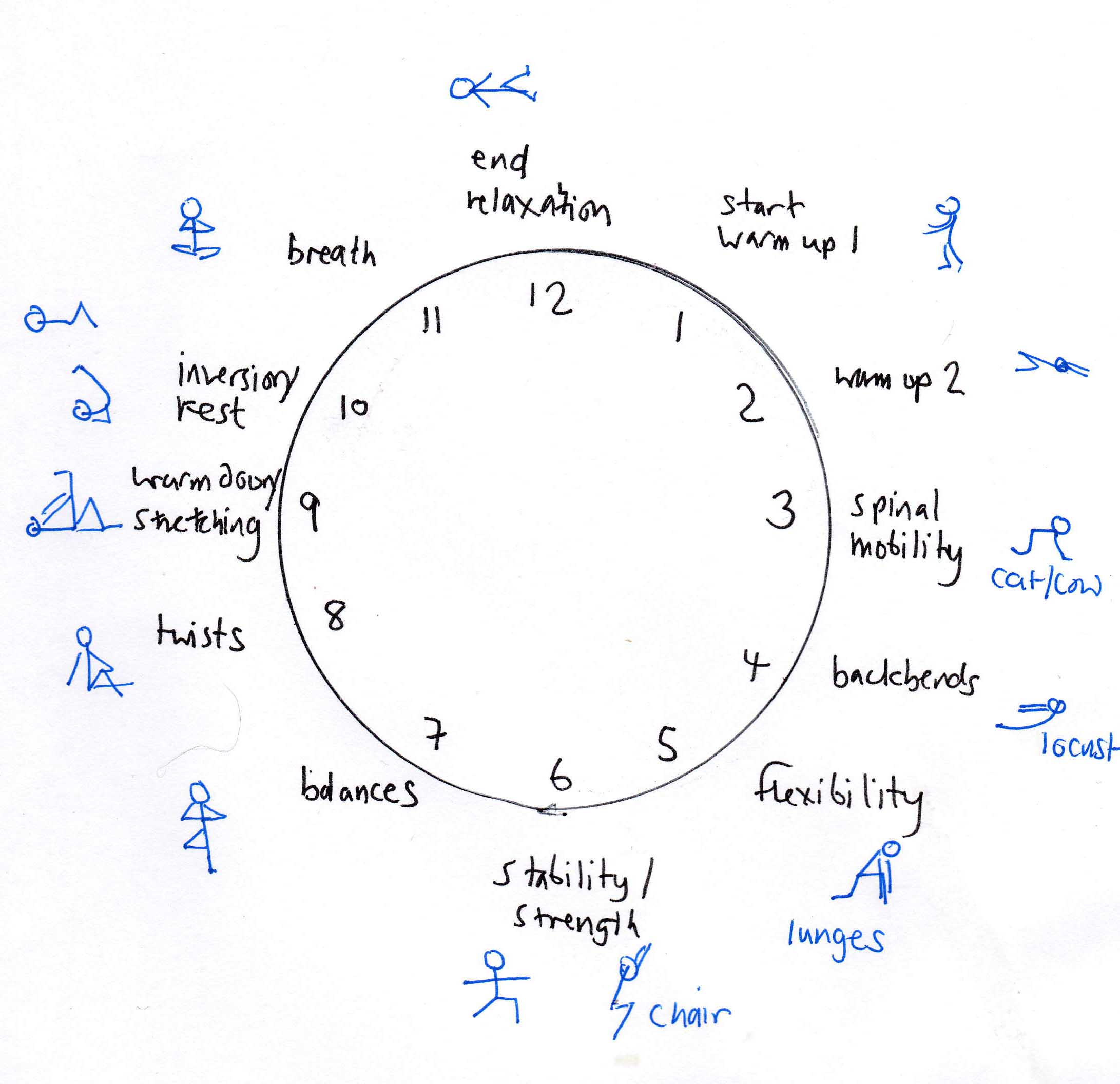Published: Jun 9, 2019 by Lucy Tennyson
The tilt of our pelvic, either forward or back, has a major impact on our posture, and can lead over the long term to back, shoulder and neck pain.
We explored this movement in class this week, first sitting cross legged on the floor, and then using blocks to help bring the pelvis into a neutral position, so we could sit with greater ease.
Most of us are “stuck” in a posterior tilt – with the top of the pelvis leaning back. Excessive sitting is one of the prime causes of a chronic posterior tilt. Sitting restricts the movement of the hamstrings, causing tightness that pulls the sitting bones down, which then flattens or rounds the lower back.
Rounding of the lower back associated with a posterior pelvic tilt can lead to back pain and disc problems, especially if it is maintained when you bend over to pick up something heavy, or overdoing forward bends in a yoga class.
A few of us tilt the top of the pelvis forward which deepens the lumbar curve. Some therapists suggest that wearing high heels exacerbates this condition.
You can read a lot about this topic online. I suggest you keep an open mind as much is opinion and different therapists can give contradictory advice. As ever, listen to your body and only do what feels right for you. And seek professional advice if you have a persistent injury or long term pain.
Here are a couple of links
https://yogainternational.com/article/view/finding-neutral-the-ideal-pelvic-tilt-in-mountain-pose
